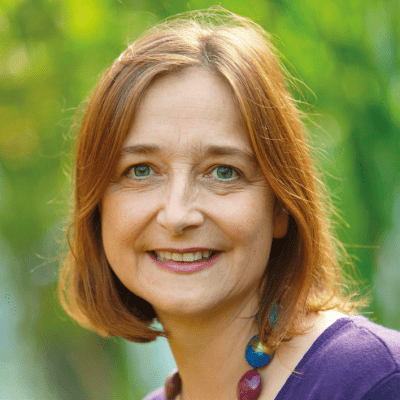Planning To Beat Disadvantage – Thinking About The Experiences That Help All Children Develop

Closing the attainment gap between children with effective home-learning environments and those without

This article is an extract from Penny’s latest book. See the end of the feature for details
Whilst all settings have a curriculum to follow, the curriculum doesn’t go into any depth about what they need to do on a day-to-day basis.
This means they must establish their own navigation systems in terms of their practice. This is straightforward for settings with clear principles about child development that guide their work, but if you are not in such a setting, you will need to make active choices about the journey children will take when they are with you. In the case of children at risk of disadvantage, planning strategically for their journey is critical.
Planning long term
‘Lucky’ children often have ‘safety nets’ in the form of parents’ resources, knowledge and contacts, which support their development. They may also have access to a range of experiences that will enrich their development and support their confidence.
We need to create our own safety nets to support children at risk of disadvantage, to ensure they have some of the same experiences and opportunities. Whilst part of the safety net involves creating supportive relationships with them, it also requires you to provide a range of opportunities to support their development, especially in key areas such as communication and language.
The idea of an ‘education programme’ is to create a long-term plan that acts as a clear roadmap for children’s developmental journeys. It should pick up on what you know about your children and their needs. This approach will allow you to put in place the skills, opportunities and experiences that you have identified as important for the children that you work with.
Providing opportunities
Some settings exclusively plan activities based on children’s current interests. Children’s interests are of course important and must be incorporated into short-term planning, but we should be aware of the potential limitations of this approach. Here are two questions you might like to reflect on:
Can children make genuine choices if they have limited experiences? Some children haven’t had a wide range of experiences outside of the setting, and are thus limited in what they can show an interest in. By planning to introduce new play opportunities and experiences, and some adult-led activities, the possibilities for children increase. This will eventually mean that they can have genuine interests and preferences.
How can you be sure children have a variety of learning opportunities and skills? Although it is technically possible to incorporate early mark making, jigsaws and sharing books into children’s interests, the reality is that unless there are very good adult:child ratios, and children who are open to suggestion, this is a challenge. If we look at ‘lucky’ children, we see they don’t spend all of their time only doing what they feel like doing.
Instead, adults will sometimes take the lead, eg taking them to the park or asking them to help them feed the cat. At these times a line of ‘no refusal’ is in place because parents recognise that overall it is for their children’s benefit.
Meeting children’s needs
It is important to tailor an education programme to the needs of your children. This means considering a number of factors:
Attendance The age at which children start in your setting and how long they spend with you will influence your provision. In some settings, children start at age two and so will attend for two to three years. This means you need to think about how their play and experiences will develop with them.
The length of sessions should also inform your plans. Three-hour sessions are very different in nature to all-day provision. Many sessional providers find that time flies by as it takes some children a while to reconnect with their key person and the setting’s routines.
Auditing children’s needs You need to reflect on the profiles of children coming into your setting. It is helpful to look for trends. Many settings say in answer to this that their children are particularly in need of communication and language skills, and skills related to self-regulation.
If there are one or two schools in your area that most children go to, consider talking to them about their data as children progress through the school. Their insights might inform your decision-making about how best to support children’s development.
Strengths and experiences Although it is important to focus on children’s needs, it is also essential to recognise their strengths, interests and experiences. Whilst these vary between individuals, you may find there are patterns and trends you can use to build on to further children’s learning and development.
Involving parents An education programme needs to be constructed with parents in mind. Parents are usually the most influential people in children’s lives, and the way that we work with them impacts significantly on our success as educators.
Working with your curriculum
Of course, you must plan an education programme in the context of the early years curriculum you work with. This means that whilst your long-term planning might focus on the experiences, outings, skills and play opportunities you feel are important for children, at some point you will need to link these to the curriculum areas or particular outcomes.
Luckily, as at present, the early years curricula in each of the home countries is not particularly prescriptive in terms of the exact activities that children must do, this is fairly easy. If, for example, you have a long-term programme for children to experience malleable materials and you are working in England, it could be linked to ‘Physical Development’, ‘Understanding the World’ and ‘Expressive Arts and Design’.
If you are working in Wales and had a long-term plan for cooking activities, you might link this to ‘Personal and Social Development’, ‘Mathematical Development’ and ‘Physical Development’.
It is important that everyone working with the programme knows the potential learning opportunities and how they link to the curriculum in detail, both because of the level of detail required if you are inspected, but more significantly, to inform what you draw children’s attention to and the skills that we help them gain.
DO YOUR RESEARCH
Three tips on creating an education programme
• Effective programmes are based on a good working knowledge of child development. As theories of child development are constantly evolving in line with research, take time to revisit what you know and update your knowledge.
• To get a sense of how your approach might work, visit other early years settings both in your local area and, if possible, other regions.
• Consult a range of materials that look at developmental norms, such as those used by speech and language therapists.
Developmental norms can be used to support precise assessment – settings working with children at risk of disadvantage need to have an accurate picture of how these children are faring in relation to their ‘lucky’ peers.
Penny Tassoni is an author, trainer and the president of PACEY.
This article is an extract from her latest book Reducing Educational Disadvantage: A Strategic Approach in the Early Years published by Bloomsbury and available now at £17.99 (RRP £19.99).












